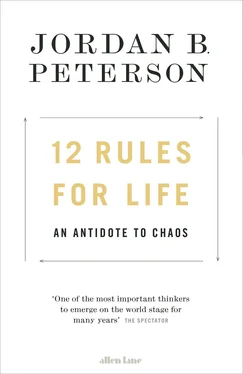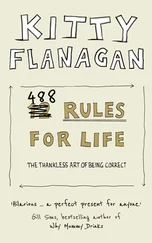Moore, L. T., McEvoy, B., Cape, E., Simms, K., & Bradley, D. G. (2006). “A Y-chromosome signature of hegemony in Gaelic Ireland.” American Journal of Human Genetics, 78 , 334–338.
Zerjal, T., Xue, Y., Bertorelle, G., Wells et al. (2003). “The genetic legacy of the Mongols.” American Journal of Human Genetics, 72 , 717–21.
Jones, E. (1953). The life and work of Sigmund Freud (Vol. I). New York: Basic Books. p. 5.
A decent brief summary of such ideas is provided here: https://www.britannica.com/art/noble-savage
Well reviewed in Roberts, B. W., & Mroczek, D. (2008). “Personality trait change in adulthood.” Current Directions in Psychological Science, 17 , 31–35.
For a thorough, empirically-grounded and reliable discussion of such matters, see Olweus, D. (1993). Bullying at school: What we know and what we can do . Malden, MA: Blackwell Publishing.
Goodall, J. (1990). Through a window: My thirty years with the chimpanzees of Gombe . Boston: Houghton Mifflin Harcourt.
Finch, G. (1943). “The bodily strength of chimpanzees.” Journal of Mammalogy, 24 , 224-228.
Goodall, J. (1972). In the shadow of man . New York: Dell.
Wilson, M.L. et al. (2014). “Lethal aggression in Pan is better explained by adaptive strategies than human impacts.” Nature, 513 , 414-417.
Goodall, J. (1990). Through a window: My thirty years with the chimpanzees of Gombe . Houghton Mifflin Harcourt, pp. 128–129.
Chang, I. (1990). The rape of Nanking . New York: Basic Books.
United Nations Office on Drugs and Crime (2013). Global study on homicide . Retrieved from https://www.unodc.org/documents/gsh/pdfs/2014_GLOBAL_HOMICIDE_BOOK_web.pdf
Thomas, E.M. (1959). The harmless people. New York: Knopf.
Roser, M. (2016). Ethnographic and archaeological evidence on violent deaths . Retrieved from https://ourworldindata.org/ethnographic-and-archaeological-evidence-on-violent-deaths/
Ibid; also Brown, A. (2000). The Darwin wars: The scientific battle for the soul of man . New York: Pocket Books.
Keeley, L.H. (1997). War before civilization: The myth of the peaceful savage . Oxford University Press, USA.
Carson, S.H., Peterson, J.B. & Higgins, D.M. (2005). “Reliability, validity and factor structure of the Creative Achievement Questionnaire.” Creativity Research Journal, 17 , 37-50.
Stokes, P.D. (2005). Creativity from constraints: The psychology of breakthrough . New York: Springer.
Wrangham, R. W., & Peterson, D. (1996). Demonic males: Apes and the origins of human violence . New York: Houghton Mifflin.
Peterson, J.B. & Flanders, J. (2005). Play and the regulation of aggression. In Tremblay, R.E., Hartup, W.H. & Archer, J. (Eds.). Developmental origins of aggression . (pp. 133-157). New York: Guilford Press; Nagin, D., & Tremblay, R. E. (1999). “Trajectories of boys’ physical aggression, opposition, and hyperactivity on the path to physically violent and non-violent juvenile delinquency.” Child Development, 70, 1181-1196.
Sullivan, M.W. (2003). “Emotional expression of young infants and children.” Infants and Young Children, 16 , 120-142.
See BF Skinner Foundation: https://www.youtube.com/watch?v=vGazyH6fQQ4
Glines, C.B. (2005). “Top secret World War II bat and bird bomber program.” Aviation History, 15 , 38-44.
Flasher, J. (1978). “Adultism.” Adolescence, 13 , 517-523; Fletcher, A. (2013). Ending discrimination against young people . Olympia, WA: CommonAction Publishing.
de Waal, F. (1998). Chimpanzee politics: Power and sex among apes . Baltimore: Johns Hopkins University Press.
Panksepp, J. (1998). Affective neuroscience: The foundations of human and animal emotions . New York: Oxford University Press.
Tremblay, R. E., Nagin, D. S., Séguin, J. R., Zoccolillo, M., Zelazo, P. D., Boivin, M., … Japel, C. (2004). “Physical aggression during early childhood: trajectories and predictors.” Pediatrics, 114 , 43-50.
Krein, S. F., & Beller, A. H. (1988). “Educational attainment of children from single-parent families: Differences by exposure, gender, and race.” Demography, 25 , 221; McLoyd, V. C. (1998). “Socioeconomic disadvantage and child development.” The American Psychologist, 53 , 185–204; Lin, Y.-C., & Seo, D.-C. (2017). “Cumulative family risks across income levels predict deterioration of children’s general health during childhood and adolescence.” PLOS ONE, 12(5) , e0177531. https://doi.org/10.1371/journal.pone.0177531; Amato, P. R., & Keith, B. (1991). “Parental divorce and the well-being of children: A meta-analysis.” Psychological Bulletin, 110 , 26–46.
Eric Harris’s diary: http://melikamp.com/features/eric.shtml
Goethe, J.W. (1979). Faust, part one (P. Wayne, Trans.). London: Penguin Books. p. 75.
Goethe, J.W. (1979). Faust, part two (P. Wayne, Trans.). London: Penguin Books. p. 270.
Tolstoy, L. (1887-1983). Confessions (D. Patterson, Trans.). New York: W.W. Norton, pp. 57-58.
The Guardian (2016, June 14). 1000 mass shootings in 1260 days: this is what America’s gun crisis looks like . Retrieved from https://www.theguardian.com/us-news/ng-interactive/2015/oct/02/mass-shootings-america-gun-violence
The words of Eric Harris: https://schoolshooters.info/sites/default/files/harris_journal_1.3.pdf
Cited in Kaufmann, W. (1975). Existentialism from Dostoevsky to Sartre . New York: Meridian, pp. 130-131.
See Solzhenitsyn, A.I. (1975). The Gulag Archipelago 1918-1956: An experiment in literary investigation (Vol. 2). (T.P. Whitney, Trans.). New York: Harper & Row.
Piaget, J. (1932). The moral judgement of the child . London: Kegan Paul, Trench, Trubner and Company; see also Piaget, J. (1962). Play, dreams and imitation in childhood . New York: W.W. Norton and Company.
Franklin, B. (1916). Autobiography of Benjamin Franklin . Rahway, New Jersey: The Quinn & Boden Company Press. Retrieved from https://www.gutenberg.org/files/20203/20203-h/20203-h.htm
See Xenophon’s Apology of Socrates, section 23, retrieved at http://www.perseus.tufts.edu/hopper/text?doc=Perseus%3Atext%3A1999.01.0212%3Atext%3DApol.%3Asection%3D23
Читать дальше












